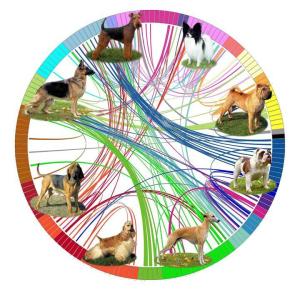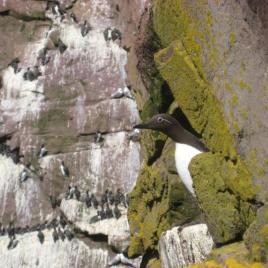
This diagram visually depicts the genetic analysis of dog breeds. (NIH Dog Genome Project)
Researchers have assembled the most comprehensive map of dog breeds to date, using genetic sequences from 161 modern breeds. The largest evolutionary tree also reveals new information about the original purposes for breeding certain types of dogs; tells the story of the dogs that accompanied humans across the Bering land bridge; and the map could help shed light on disease-causing genes in both dogs and humans. The study also contains the first living evidence of the “New World Dog” — an ancient canine sub-species that migrated across the Bering Strait with the ancestors of Native Americans — in some modern breeds.
Authors:
Heidi G. Parker, Dayna L. Dreger, Maud Rimbault, Brian W. Davis, Alexandra B. Mullen, Gretchen Carpintero-Ramirez, Elaine A. Ostrander
Corresponding author:
Elaine Ostrander, National Institutes of Health, Email: eostrander@mail.nih.gov
Original paper published in Cell Reports on April 25, 2017.

